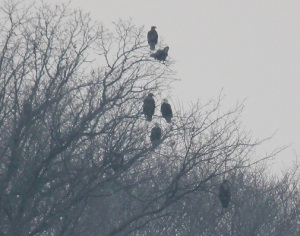Blowback! Minnesota wind developer takes on opponents’ ‘vendetta’

By Tom Steward | Watchdog Minnesota Bureau
CORNISH TOWNSHIP, Minn. — The developers of a proposed 10-turbine wind farm under fire from dozens of residents denied alleged permit violations, while reaffirming plans to proceed with the controversial project, in newly filed documents with the Minnesota Public Utilities Commission.
Indiana-based WESCO Wind blamed bad weather and opponents’ pressure to study the Sibley Wind Substation’s potentially lethal impact on eagles and bats for construction delays in a project on the drawing board since 2005.
“I believe the project is not in violation of the state permit,” said Steven Estes, president of WESCO Wind in a Wednesday filing with the MPUC. “WESCO Wind has spent millions of dollars to get the project built and we have in place the plan to complete the construction in 2015. These dollars spent were because of the state permit and to have it jeopardized now, after willingly going through the Avian study, would be a travesty.”
Thirty supporters of the wind energy facility also weighed in with letters backing the development. “The project will help control the cost of electrical power in the community, create jobs and be very beneficial for the area,” wrote Kristopher Vos, a Tyler resident.
State regulators took the unusual step of opening an inquiry into alleged permit violations on the proposed 20 megawatt wind energy facility in November.
“Since construction began, the Commission has received several complaints, allegations of violations, and requests for hearing,” states the MPUC notice to reconsider the project’s permit.
“As a township, we feel to some extent, that we’ve finally been heard,” said Daniel Schleck, attorney for the Cornish Township board, which opposes the project. “This is the first action by the PUC since they passed the permit. So we feel good about that.”
Opponents filed a 32-page document listing several alleged violations of the 1,600 acre project’s permit, questioning whether developers met state requirements.
“There is no interpretation of the Minnesota rules, no matter how liberally construed, for which SWS can claim it has met its burden to commence continuous construction as required,” states the citizens’ online filing.
EAGLE COUNT: Developers of the Sibley Wind Substation project will soon release results of a voluntary study of the potential dangers to bats, ducks, eagles and other species photographed by wind turbine opponents.
The MPUC first issued SWS a permit in 2008, followed by a two-year extension Oct. 12, 2011. On Oct. 11, 2013, the developer informed state regulators construction had begun, according to MPUC documents. Photographs show the grading and site preparation work done last year by SWS to meet state requirements for the 20-megawatt project largely blends in with farm fields in the area.
State Rep. Glenn Gruenhagen has urged the MPUC board to take the process a step further by convening a hearing to revoke SWS’ permit.
“The PUC must act to maintain the integrity of the permitting process and protection of the citizens of Minnesota. If no consequences result from the heinous violations and disregard of state rules, ordinance and the PUC permitting process, regulated parties will see this as a free pass to permit violations of all kinds in the future,” Gruenhagen states in a lengthy document also signed by some 75 opponents.
SWS officials underscored the economic benefits of the wind farm to local taxpayers, estimated at $75,000 to $90,000 in production tax revenue annually to the county and township. The wind energy company also questioned the timing of the challenge.
“I would like to know why the opposition group never voiced any complaints during the two public meetings and review periods when the state permit was granted and just started their vendetta opposing the project after shareholders and Wesco Wind have spent millions of dollars in development and transmission upgrades,” stated Wayne Hesse, president of Southwest Wind Consulting in a document on the MPUC docket.
Opponents say it took time to get up to speed on the permitting process, as well as document the populations of bald eagles, swans, ducks and other species in the affected area.
“It has been a huge learning curve and thankfully, this project is so poorly sited, that they have been unable to move forward,” said Barb Winninger, a Cornish Township resident. “We have been able to get educated and organized and present a more accurate picture of the project footprint.”







